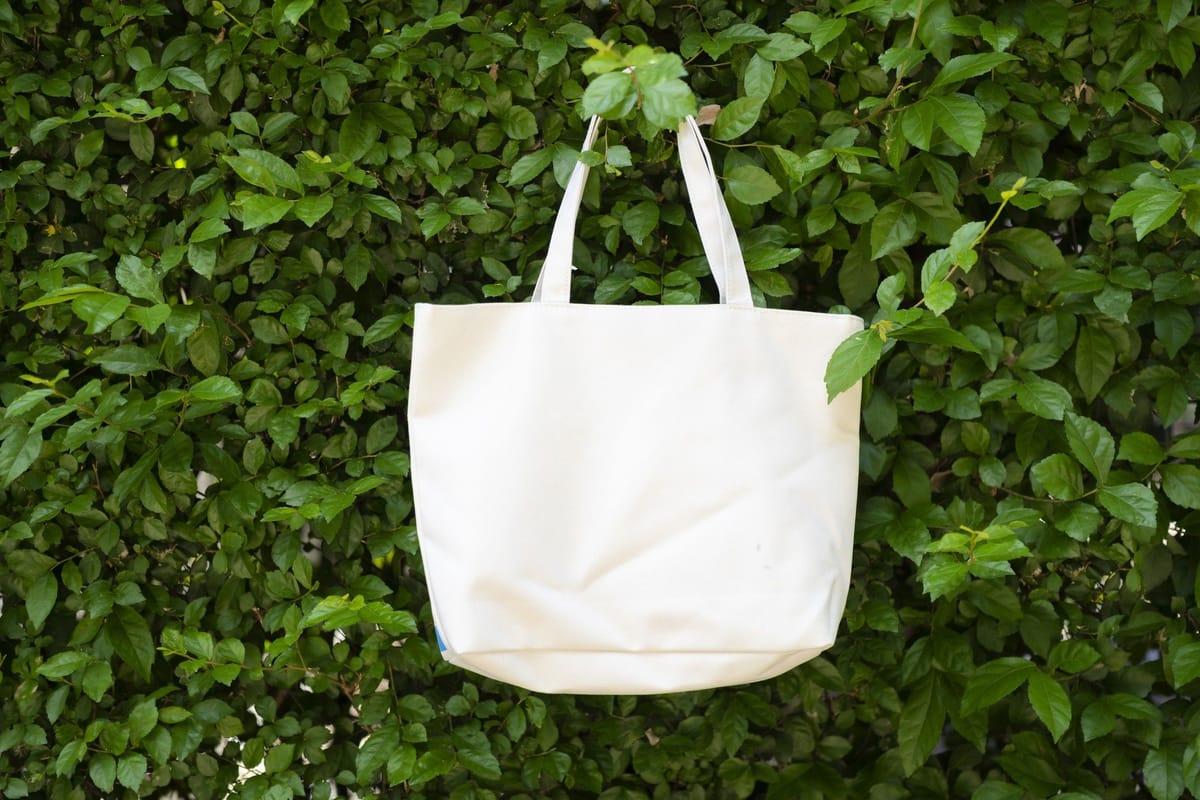Your cute tote bag is not that green

As the fight against plastic intensifies, alternatives have come into the market in the form of cute cotton tote bags adorned with environmentally friendly puns, becoming a trend and an aesthetic for social media.
Yet the impact of these so-called plastic alternatives is debatable.
Dr Lize Barclay, Senior Lecturer in Futures Studies and Systems Thinking, Stellenbosch University Business School says it is projected that you must use a cotton tote 7100 times before you equal the ‘footprint’ of one plastic bag.
“Cotton is a resource-intensive crop that requires water, pesticides and fertilisers which add to the negative effects of pollution and climate change. Whilst many shops have removed plastic bags, requiring us to purchase their branded bag, these alternative bags have become an unsustainable pile of shame in the boot, entryway, or kitchen.”
“Like most so-called green energy solutions, from a systems perspective, nothing is truly green, and everything has some systemic environmental price. True innovation and vigilance are needed to find real and lasting solutions that are near-truly green and are not green-whishing and green-washing.”
The initial designer of the plastic bag, the Swedish designer Sten Gustaf Thulin, designed the plastic shopping bag in 1965 to save trees and to be reused. According to his son, he always kept one folded (which was part of the principle behind the design) in his pocket to use and reuse.
International Plastic Bag Free Day (3 July) aims to raise awareness of the dangers of the native effects of plastic pollution, especially plastic bags, motivating people and institutes to embrace sustainable alternatives and combat the detrimental effects of plastic pollution.
“Although the initial design of plastic, including that of plastic bags, was also intended to protect the environment and counteract deforestation, as well as the use of horn, ivory and hooves for creating containers and products – we have since realised the dangers of plastic, especially disposable plastic,” says Dr Barclay.
“All plastic ever created is still in the environment, although not necessarily in its visible form. Plastic breaks down into micro and nano-plastic which eventually finds its way into our water, soil and food.”
Recently plastic has been found in the blood of animals and humans, including in the brain and placenta. Research shows that it could be detrimental to human health, ranging from increased risks of cancer, heart disease, hormonal disruption and gut microbiome disruption.
“As plastic bags degrade, various toxic substances into the soil, air and water is released, clumping together and blocking drainage which intensifies flooding and the breakout of mosquitoes and disease. Plastic harms wildlife and disrupts ecosystems, threatening all life on earth, including humans.”
Dr Barclay says engineers and industrial designers are exploring circular design to keep redesigning, reusing and refurbishing products to keep them and their components in circulation and out of the landfill.
“As consumers it is essential that we support these initiatives and products, to ensure that it becomes the design norm and not the design exception – including for plastic bags.”
“The Zero Waste Movement, from a consumer perspective, focuses on an aspirational personal limit of creating zero waste. We can all follow their five Rs as an upside-down pyramid.”
- Refuse what you don’t need and don’t add to the amount of disposal products, especially plastic, into the world.
- Reduce that which you have and need – donate the rest.
- Reuse what you have, even if it is not aesthetically pleasing.
- Recycle paper, glass, metal, plastic, etc. or empower the waste-pickers in your area by providing them with your items to transport to recycling plants and earn much-needed income.
- Rot – compost organic vegetable matter.
This July Dr Barclay encourages everyone to be conscious of their plastic bag usage by following these ten practical suggestions:
- Keep a bag or two, any bag, in your pocket, as the designer of the plastic bag intended – ready to use and reuse.
- Find all the various bags scattered throughout your home and in your boot and put them in the kitchen.
- Take stock of your mountain of bags, be that plastic, material or otherwise and sort them into plastic, paper, cloth, etc.
- Give away some of the fabric and paper bags to the shops where you got them for them to reuse or recycle (even if you bought them).
- Donate plastic bags to non-governmental organisations that use plastic bags to make carpets, toys, clothes, etc with the bags.
- Take the spare pretty cotton and other bags which is not used, fill them with essentials and donate them to your local shelter.
- Create artwork from the bags, post it on social media (tag @lize_barclay on Instagram) and keep the art at your front door to remind you to put and keep a bag in your pocket.
- Visit a Zero Waste shop in person or online.
- Take bags and containers to the shops with you and get them, and yourself, to fill those, rather than into another disposable bag or container.
- Get a plastic bottle, and a sturdy stick and create an ‘Ecobrick’ for any new disposable plastic bags that find it your way and donate your ‘Ecobrick’ via various non-governmental organisations for construction purposes – just note that it is not the ideal environmental solution due to some harmful leakage that could occur as the plastic breaks down and we want to keep all plastic out of the environment, but it is a solution at least.



